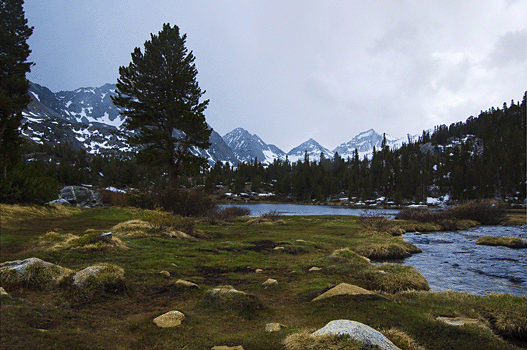California In Record Drought
February 6, 2014
The Republican-controlled U.S. House of Representatives passed legislation yesterday designed to address California’s current water shortage. The House bill would, among other things, roll back environmental protections and halt restoration of a dried-up stretch of the San Joaquin River in order to revive salmon runs. Republican members of the House blamed the water shortage on liberal environmentalist policies, arguing that fish were being put ahead of farmers. “We have listened to the environmental left for 40 years, and this is where it’s gotten us,’’ declared Representative Tom McClintock (R., California) on the floor of the House. Another California representative, Ken Calvert, said, “Congress can’t pass a bill to make it rain, but we can pass a bill to put an end to the water shortages that have been caused by misguided regulatory decisions.” Fully 33 percent of available water in California is used for the irrigation of crops. Democrats responded that the problem is simply a lack of rain.
Along with other parts of the West, California is undergoing a third straight year of severe drought. In late January, California Governor Jerry Brown declared a drought emergency, pointing out an extreme need for the conservation of water. He asked Californians to voluntarily reduce their water consumption by 20 percent. This is “perhaps the worst drought California has ever seen since records began being kept about 100 years ago,” stated Brown at a news conference. “We can’t make it rain, but we can be much better prepared for the terrible consequences that California’s drought now threatens, including dramatically less water for our farms and communities and increased fires in both urban and rural areas.”

Much of California's urban water comes from the spring melt of snow from the Sierra Nevada in eastern California. This winter's snowpack is dangerously low. (© Shutterstock)
The months of December through April are usually California’s rainy season, but not this year. Vegetation that typically rehydrates with rain during this period has continued to get dryer, becoming ever more dangerous. In January 2013, there were no wildfires in California; in January 2014, there were more than 400.
Much of the state’s urban water supply comes from the spring melt of the Sierra Nevada snowpack. While a good deal of the United States east of the Rockies has received above-normal amounts of snow this winter, California has received far less than normal. In late January, the California Department of Water Resources (DWR) reported that the Sierra snowpack was only 12 percent of the average amount for this time of the year, a record low. “If we don’t get more storms in here that actually dump some reasonable snowpack by April 1 . . . [state reservoirs are likely to be] “alarmingly dry during the summer,” warned Dave Rizzardo, chief of DWR’s snow survey section.
Additional World Book articles:
- The Colorado River: Lifeline in the Southwest (a special report)
- How the Oceans Affect Climate (a special report)
- When the Rains Stop (a special report)


